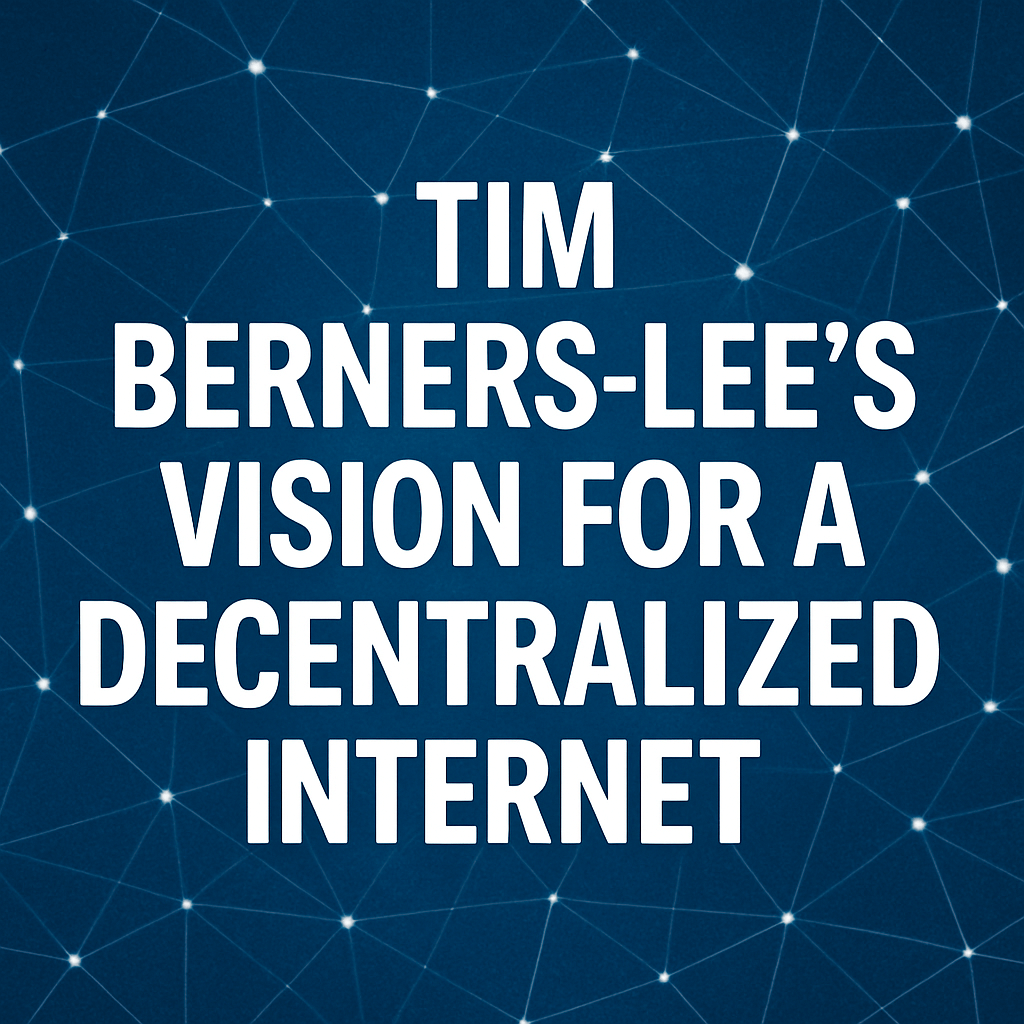Tim Berners-Lee’s Vision for a Decentralized Internet

Inventor of the World Wide Web Tim Berners-Lee reflected at ETH Prague on how the foundational Domain Name System (DNS) might have been designed today with greater decentralization and resilience. Speaking alongside Ethereum co-founder Vitalik Buterin, Berners-Lee acknowledged that although he did not author DNS itself, the URL structure and naming architecture could have been reimagined to avoid single points of control.
Centralization of the DNS
The DNS hierarchy remains highly centralized at its apex. Thirteen logical root servers, labeled A through M, are governed by the Internet Assigned Numbers Authority under ICANN’s oversight. In practice, those thirteen names map to over 1,000 anycast instances worldwide, yet policy and zone-file management stay under a small group of stakeholders.
- ICANN control: The Internet Corporation for Assigned Names and Numbers administers top-level domains (.com, .org, .net) with delegated responsibilities to five Regional Internet Registries (RIRs).
- Authoritative servers: A handful of organizations operate the most critical authoritative servers, creating potential choke points for censorship or government intervention.
- Privacy concerns: Standard DNS queries over port 53 are visible to ISPs and on-path observers; while DNSSEC adds cryptographic integrity, encryption standards such as DNS over HTTPS (DoH) and DNS over TLS (DoT) address confidentiality only at the transport layer.
Crypto’s Solution to the Problem
Web3 projects have built naming protocols that replace centralized root zones with on-chain registries. The Ethereum Name Service (ENS) uses EIP-137 to map human-readable .eth names to account addresses, IPFS content hashes and smart-contract metadata. Unstoppable Domains mints NFT-based domains on Ethereum and Polygon, enabling permanent ownership and on-chain transfers.
Security and Resilience Analysis
Decentralized DNS alternatives aim to eliminate single points of failure. By storing zone records on distributed ledgers, censorship resistance improves—but at the cost of lookup latency and on-chain transaction fees.
- Handshake (HNS): A permissionless, proof-of-work blockchain that anchors a root zone compatible with BIND resolvers. Handshake supports cross-chain bridges, enabling interoperation with existing DNSSEC validators.
- Namecoin (NMC): One of the earliest Bitcoin forks, Namecoin employs merged mining and stores
.bitrecords on-chain. However, declining hashpower and limited developer activity have slowed adoption. - DNSSEC and On-chain Verification: Combining DNSSEC signatures with blockchain timestamping can provide cryptographic proof of authenticity while retaining legacy DNS compatibility.
Economic and Governance Models of Decentralized Naming
On-chain auctions and token incentives underpin many naming systems but bring their own challenges:
- Auction mechanics: ENS originally used a Vickrey auction for name registration; Unstoppable Domains switched to first-come, first-served with a flat fee. Both approaches balance speculation risk against fair market value.
- Governance tokens: Some projects mint governance tokens to allow stakeholders to vote on protocol upgrades, fee structures and dispute resolution frameworks.
- Cost considerations: Gas prices on Ethereum can spike during network congestion, potentially making name registration prohibitively expensive for retail users.
Interoperability and Adoption Challenges
For decentralized naming to supplant legacy DNS, client-side support and seamless integration are essential:
- Browser integration: Native support for ENS in browsers like Opera and Brave has driven millions of lookups, but mainstream browsers remain slow to adopt.
- Resolver diversity: End users need simple configuration for DoH/DoT alongside on-chain resolvers, or browser extensions that handle fallback resolution.
- Enterprise adoption: Large organizations require stability, SLA guarantees and backward compatibility with existing certificate authorities and TLS workflows.
Expert Opinions and Future Directions
“Decentralization is not just a technical choice—it’s a governance one,” said Vitalik Buterin. “We need hybrid architectures that leverage blockchain immutability with the performance of optimized caching layers.”
Berners-Lee’s call for a more decentralized DNS aligns with broader internet-governance debates on resilience, censorship resistance and user sovereignty. As Web3 naming systems mature, they will need to address scalability, security and ease of use to realize the vision of a truly decentralized web.